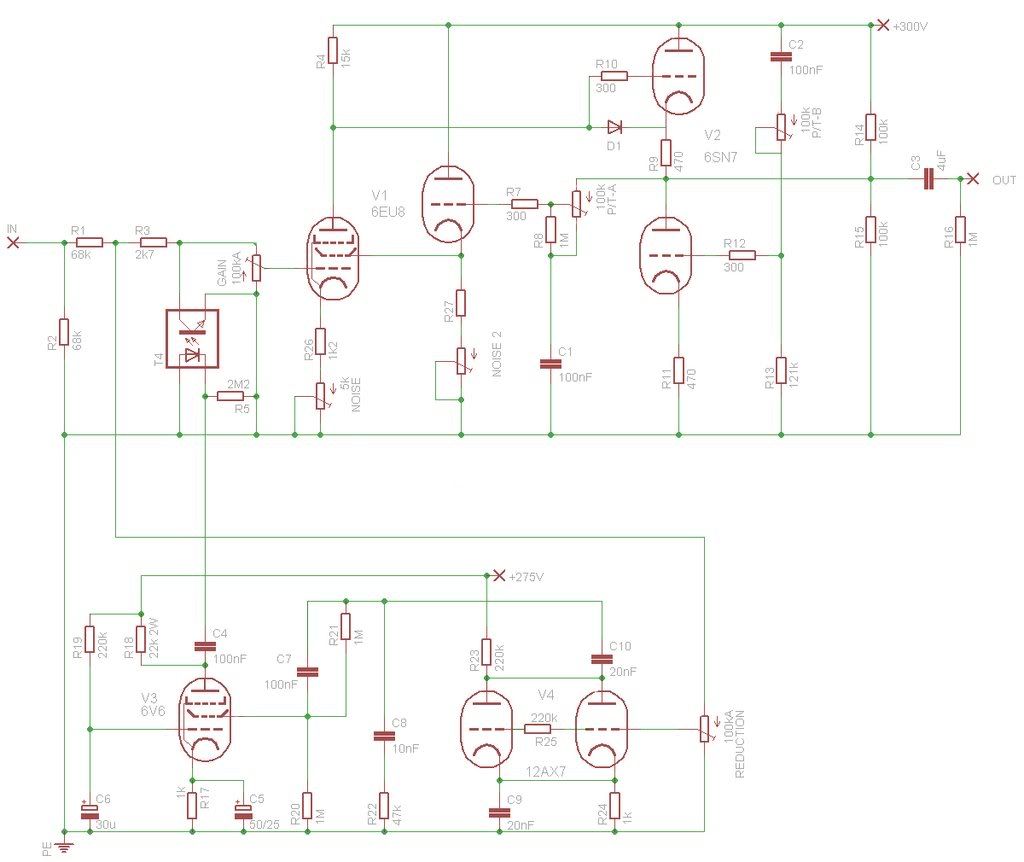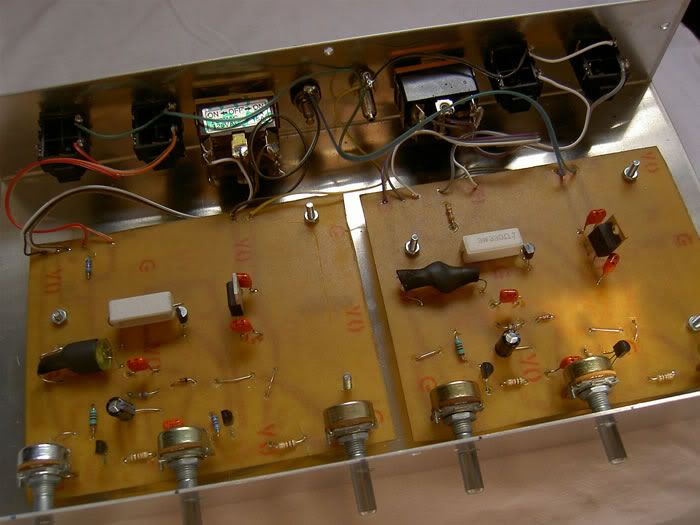lernith
Well-known member
Here's something I wanted to get some opinions/perspective on. The goal is to make a tube compressor/distressor. I plan to use it unbalanced. The compressor (that is to say, the sidechain and reduction bits) are straight from an LA-2A (or rather, a version of the LA-2A that CJ streamlined); the make-up amp / distressor is the Ultra-linear Aikido amp (introduced here: http://www.tubecad.com/2006/06/blog0069.htm ). This amp is supposed to be able to blend between pentode and triode operation, which I hope will lend different types of distortion.
The bias for V1 is fiddled with and that will cause nonlinearity in a hopefully pleasing manner, à la the Thermionic Culture's “Culture Vulture”. I will probably experiment with a pot on the triode section of V1 as well. The pots will have a range resistor that will make the valve linear when the pot is fully CCW.
I've never tried this sort of thing before; the design might be laughable.
But, um, no laughing plz.
Let me know what you think of the application and the math. The 5k “Noise” pot was somewhat arbitrary. Probably too high to have a useful range. I really need to practice with those linearity charts. No giggling!
My brother got me a huge box of tubes off craigslist for Christmas, so hopefully I'll get that practice. That was a fun carry-on at the Denver Airport. It'll be a little while before I get the rest of the parts, but I hope to have one running soon, and will post sound files....
Thanks in advance for any comments!

The bias for V1 is fiddled with and that will cause nonlinearity in a hopefully pleasing manner, à la the Thermionic Culture's “Culture Vulture”. I will probably experiment with a pot on the triode section of V1 as well. The pots will have a range resistor that will make the valve linear when the pot is fully CCW.
I've never tried this sort of thing before; the design might be laughable.
But, um, no laughing plz.
Let me know what you think of the application and the math. The 5k “Noise” pot was somewhat arbitrary. Probably too high to have a useful range. I really need to practice with those linearity charts. No giggling!
My brother got me a huge box of tubes off craigslist for Christmas, so hopefully I'll get that practice. That was a fun carry-on at the Denver Airport. It'll be a little while before I get the rest of the parts, but I hope to have one running soon, and will post sound files....
Thanks in advance for any comments!

































![Soldering Iron Kit, 120W LED Digital Advanced Solder Iron Soldering Gun kit, 110V Welding Tools, Smart Temperature Control [356℉-932℉], Extra 5pcs Tips, Auto Sleep, Temp Calibration, Orange](https://m.media-amazon.com/images/I/51sFKu9SdeL._SL500_.jpg)




